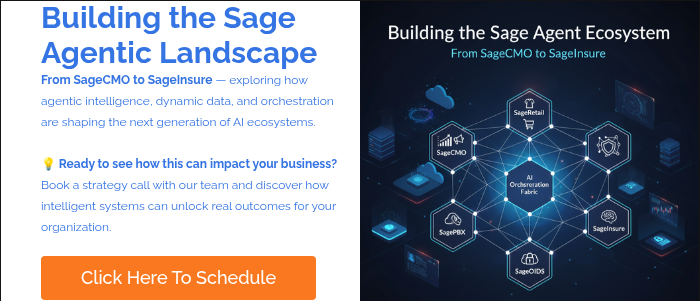
India's Bold Move: Daily Options Trading in GIFT City from 2025
The headline: India is joining the global daily options club, and the implications stretch far beyond derivatives trading.
Starting October 13, 2025, NSE IFSC—a subsidiary of the National Stock Exchange operating from India's offshore financial hub, GIFT City—will launch Nifty 50 options with daily expiries. This marks a pivotal moment in India's capital markets evolution, one that sits at the intersection of regulatory strategy, global capital flows, and the emerging AI-driven trading ecosystem.
The mechanics are straightforward: weekly tenor contracts with a tick size of $0.50, designed specifically for global investors operating under a regulated offshore framework. But the strategic calculus behind this move is anything but simple.
🎯 The Context: A Tale of Two Markets
To understand the significance of this launch, we need to recognize the dual-track strategy India is pursuing.
Onshore reality: Earlier this year, SEBI—India's securities regulator—imposed strict curbs on retail derivatives trading within domestic markets. The reason? Mounting concerns about retail investor losses, with studies showing that a significant majority of individual traders were losing money in the options market. The regulatory crackdown was swift and decisive: reduced weekly expiries, higher margin requirements, and stricter position limits.
Offshore ambition: While tightening the domestic market, India is simultaneously building GIFT City as a global derivatives destination. NSE IFSC's daily options launch represents the offshore counterweight to domestic restrictions—a carefully orchestrated strategy to attract global capital while protecting retail investors at home.
This mirrors China's approach with its onshore markets versus Hong Kong, creating a bifurcated ecosystem where sophisticated global capital operates under different rules than domestic retail participants.
💡 Why Daily Options Matter: The 0DTE Revolution
Daily expiry options—often called "0DTE" (zero days to expiration)—have fundamentally reshaped US markets since their explosive growth in 2022. Today, these ultra-short-dated contracts account for more than 50% of S&P 500 options volume, a staggering transformation in just three years.
What makes them attractive:
Precision hedging: Institutional investors can manage specific event risk (earnings, economic data releases) without carrying unnecessary time premium. A portfolio manager worried about Friday's jobs report can hedge precisely for that risk without paying for protection through the following week.
Capital efficiency: Daily options require less premium outlay compared to weekly or monthly contracts, allowing traders to express views with lower capital commitment. This efficiency is particularly valuable for high-frequency strategies and short-term tactical positioning.
Volatility capture: For professional traders, daily options provide opportunities to capitalize on intraday volatility swings and gamma scalping strategies that were previously less accessible.
Liquidity begets liquidity: As volume concentrates in daily expiries, market makers compete more aggressively, tightening spreads and creating a self-reinforcing cycle of improved market quality.
India's entry into this space isn't merely following a trend—it's a declaration of intent to compete for global derivatives flow in the fastest-growing segment of the options market.
🌏 The Strategic Play: GIFT City's Global Ambitions
GIFT City isn't just another financial center—it's India's answer to Singapore, Hong Kong, and Dubai. The daily options launch is a critical piece of a larger puzzle.
Attracting global capital: Major proprietary trading firms like Citadel, Optiver, Jane Street, and Susquehanna are perpetually scanning for new markets offering liquidity, volatility, and growth. India represents all three. With a $3.5 trillion economy growing at 6-7% annually and increasing integration into global indices, exposure to Indian equities is increasingly non-optional for global portfolios.
Regulatory arbitrage (the smart kind): GIFT City operates under a special economic zone framework with distinct regulations, offering global firms a familiar regulatory environment (closer to international standards) while accessing Indian market exposure. It's not about lax oversight—it's about internationally compatible frameworks that global institutions understand and trust.
The Singapore benchmark: Singapore built its derivatives hub on the back of Asian index products. GIFT City is positioning to do the same for India-specific products, potentially capturing flow that might otherwise go through Singapore or CME.
The timing factor: Hong Kong is rolling out similar daily options products in 2026, and Singapore continues to innovate. The Asian derivatives landscape is entering a competitive phase not seen in decades. First-mover advantage matters, and India is staking its claim now.
🤖 The AI Trading Catalyst: Where Technology Meets Opportunity
Here's where the convergence thesis becomes truly compelling. Daily options aren't just a new product—they're a new substrate for algorithmic and AI-driven trading strategies.
The infrastructure is already here: Cloud computing, machine learning frameworks, and real-time data processing have matured to the point where sophisticated trading strategies can be developed, tested, and deployed at a fraction of historical costs. What once required proprietary infrastructure and massive capital investment can now be built on AWS, Google Cloud, or Azure with the right expertise.
Natural language meets trading: Platforms are emerging that allow traders to describe strategies in plain English, with AI translating intent into executable code. "Buy Nifty calls when implied volatility drops below the 30-day average and momentum is positive" becomes automatically testable and tradable. This democratization of strategy development is profound.
Backtesting at scale: Historical data for NSE, BSE, and now GIFT City products enables comprehensive simulation of 0DTE strategies across multiple market regimes. Machine learning models can identify patterns, optimize parameters, and stress-test strategies against thousands of scenarios before risking real capital.
Real-time execution intelligence: AI-driven execution engines can monitor multiple markets simultaneously, identify arbitrage opportunities between onshore and offshore products, optimize order routing, and manage risk in real-time. The speed and complexity of daily options markets demand this level of automation.
Compliance as code: SEBI mandates broker-level infrastructure for algorithmic trading, including Algo-ID tagging, risk management systems, and kill switches. AI can automate compliance workflows, monitor positions against regulatory limits, and ensure adherence to market manipulation rules—turning regulatory requirements from burden into competitive advantage.
🏢 Industry Implications: Who Benefits?
Institutional Asset Managers: Daily options enable granular portfolio hedging and tactical overlay strategies. A fund manager with significant India exposure can now hedge specific event risk (budget announcements, RBI policy decisions, earnings clusters) without over-hedging or carrying unnecessary time decay.
Insurance Companies: Insurers with equity-linked products or significant equity portfolios can use daily options for dynamic hedging, adjusting protection in response to market conditions rather than maintaining static hedges that erode value through theta decay.
Proprietary Trading Firms: The bread and butter of high-frequency and quantitative trading shops. Daily options provide the volatility, liquidity, and mathematical structure that systematic strategies thrive on. Expect significant technology and talent investment in this space.
Fintech Platforms: Companies like Capitalise.ai and Indian equivalents sit at the convergence point. They can offer retail and institutional clients AI-powered tools for strategy development, backtesting, and execution—bridging the gap between sophisticated quantitative techniques and accessible interfaces.
Global Banks: Investment banks with India desks can offer clients structured products and trading strategies using daily options as building blocks, creating differentiated offerings for wealth management and institutional clients.
🔮 The Dual-Entity Opportunity: Operating Across Borders
For fintech companies and trading platforms, this environment creates a unique structural opportunity.
The India entity handles domestic compliance, retail customer onboarding under SEBI regulations, and integration with Indian brokers and exchanges. It operates under Indian KYC/AML frameworks and caters to the domestic market within regulatory constraints.
The Dubai/Singapore entity (often structured as an FZCO or similar) targets global institutional clients, non-resident Indians, and sophisticated investors seeking access to GIFT City products. It operates under international regulatory frameworks while maintaining operational connectivity to Indian markets.
This dual structure isn't about regulatory arbitrage—it's about meeting different client segments where they are, under appropriate regulatory oversight. It mirrors how global fintech companies operate across jurisdictions, maintaining compliance while serving diverse client bases.
The operational challenge lies in maintaining seamless technology infrastructure, consistent risk management, and unified data architecture across entities while respecting jurisdictional boundaries. Get this right, and you have a competitive moat.
📊 Risk Considerations: Learning from History
Enthusiasm must be tempered with awareness of risks.
Retail education gap: Daily options are complex instruments. The domestic crackdown on derivatives stemmed from retail losses. Any platform offering these tools must prioritize education, risk disclosure, and appropriate suitability frameworks.
Market stability concerns: In US markets, concentration in 0DTE options has raised questions about market stability and end-of-day volatility. Regulators globally are watching these dynamics. India will need to develop its own framework for monitoring and managing these risks.
Liquidity fragmentation: Will liquidity concentrate in GIFT City products, or remain dispersed across onshore and offshore venues? Market makers and institutional participants will determine this through their participation—or lack thereof.
Technology infrastructure stress: High-frequency trading in daily options places enormous demands on exchange infrastructure, connectivity, and risk management systems. NSE IFSC will need to demonstrate it can handle peak volumes without degradation.
🧭 The Convergence Thesis: Where We Go From Here
What makes this moment significant isn't just the launch of a new financial product. It's the convergence of multiple trends creating a phase change in how markets operate.
Regulatory sophistication: India is demonstrating it can manage nuanced, multi-tiered regulatory frameworks that protect retail participants while courting global capital.
Infrastructure maturity: Cloud computing, AI/ML capabilities, and data infrastructure have reached the point where sophisticated trading strategies are accessible beyond the traditional bulge bracket.
Market structure evolution: The bifurcation between onshore retail and offshore institutional markets creates natural segmentation that, if managed well, could be a feature rather than a bug.
Talent and capital convergence: India has deep quantitative talent, growing capital markets, and increasing integration into global financial flows. GIFT City provides the institutional structure to channel this convergence.
For professionals in finance, technology, and the intersection thereof, this represents a rare opportunity to be early to a structural shift. The combination of regulatory sandbox, offshore investor access, and AI trading capability could redefine India's position in global derivatives over the next five years.
🎯 What to Watch
Q4 2025: Volume and open interest trends in NSE IFSC daily options—are institutional participants actually showing up?
2026: Hong Kong's daily options launch and the beginning of genuine competitive dynamics across Asian derivatives hubs.
Regulatory evolution: How SEBI and GIFT City's regulatory authority (IFSCA) adapt frameworks as these markets develop. The regulatory learning curve matters enormously.
Technology platforms: Which fintech and trading platforms successfully bridge the gap between sophisticated capability and accessible interfaces? Market share here will be determined quickly.
Global integration: Will NSE IFSC products attract sufficient international flow to create genuine price discovery, or remain primarily an India-focused market with offshore venue characteristics?
💭 Final Thought
India isn't just launching daily options. It's signaling a global ambition: rein in domestic speculation while building world-class offshore infrastructure. Daily options aren't merely a trading product—they're a statement that GIFT City intends to sit alongside Chicago, Hong Kong, and Singapore in the derivatives hierarchy.
For those building at the convergence of AI, digital platforms, and capital markets, the message is clear: the infrastructure is ready, the regulatory framework is maturing, and the opportunity window is open. What gets built in the next 24 months will shape Indian capital markets for the next decade.
The question isn't whether this matters. It's whether you're positioned to participate.
What's your take? Are you watching GIFT City's evolution? Building in this space? I'd love to hear perspectives from those operating at the convergence of markets and technology.
#CapitalMarkets #AITrading #FinTech #GIFTCity #Derivatives #India #AlgorithmicTrading #DigitalTransformation



